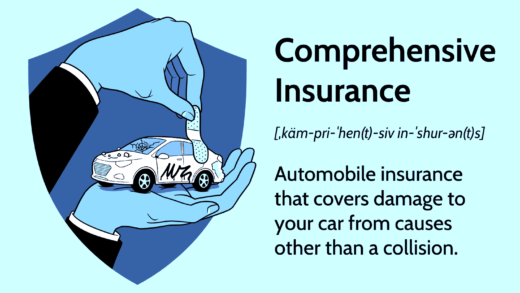This article covers essential aspects of brake light wiring, including its function, common mistakes, troubleshooting tips, and safety precautions. Understanding these elements is crucial for maintaining effective brake light systems and ensuring vehicle safety.
What is Brake Light Wiring? Understanding the Basics
Brake light wiring is a crucial part of any vehicle’s electrical system. It involves the network of wires and components that control the brake lights when the driver presses the brake pedal. This system is essential for vehicle safety, as it signals to other drivers that the vehicle is slowing down or stopping.
Understanding brake light wiring is important because malfunctioning brake lights can lead to dangerous situations on the road. For instance, if your brake lights are out, other drivers may not realize you’re stopping, increasing the risk of rear-end collisions. Regular checks and maintenance of your brake light wiring can prevent these hazardous situations.
Overall, brake light wiring is not just about making sure the lights turn on; it’s about ensuring safe driving conditions for everyone on the road.
How Does the Brake Light Circuit Work? A Simple Breakdown
The brake light circuit operates through a straightforward process that involves several key components. When the brake pedal is pressed, it activates a switch, typically located near the pedal mechanism. This switch closes the circuit, allowing electricity to flow from the vehicle’s battery to the brake lights.
Essentially, the flow of electricity is what causes the brake lights to illuminate. The circuit consists of several parts:
- Power Source: Usually the car’s battery.
- Brake Switch: Activates the circuit when the brake pedal is pressed.
- Wiring: Conducts electricity from the power source to the brake lights.
- Brake Lights: The lights that illuminate at the rear of the vehicle.
Understanding this simple breakdown helps in troubleshooting issues when brake lights fail to work. If you know how the circuit operates, you can more easily identify where a problem may lie.
Main Components of Brake Light Wiring: What You Need to Know
Several essential components make up the brake light wiring system. Knowing these parts will aid in effective troubleshooting and repair.
- Brake Light Bulbs: These bulbs illuminate when the brake pedal is pressed. It’s crucial to ensure they are functioning properly.
- Brake Light Switch: This switch is activated by the brake pedal and is a common point of failure in the circuit.
- Wires: These conduct electricity from the battery to the brake lights. Inspecting for frays or breaks is vital.
- Connectors: These secure the wiring connections. Poor connections can lead to intermittent issues.
Each component plays a significant role in the functionality of the brake lights. Understanding these parts can help vehicle owners maintain their brake light system and ensure it operates safely and effectively.
Identifying Faulty Brake Light Wiring: Signs to Look For
Identifying faulty brake light wiring is essential for maintaining vehicle safety. Recognizing the signs of malfunction can prevent accidents and ensure your brake lights function properly. Common indicators of brake light issues include:
- Dim or Flickering Lights: If your brake lights are dim or flicker when activated, this may signal a wiring issue or a failing bulb.
- No Response When Pressed: When pressing the brake pedal, if the lights do not illuminate at all, it’s a clear sign that something is wrong within the circuit.
- Inconsistent Lighting: If the brake lights work intermittently, this could indicate poor connections or frayed wiring.
- Burnt Smell or Visible Damage: A burnt smell or visible damage to the wiring can indicate overheating and potential failure. Check for exposed wires or melted connectors.
If you notice any of these signs, it’s crucial to investigate further. Ignoring these issues can lead to dangerous situations on the road. Regular checks and maintenance can help catch these problems early.
Tools Needed for Brake Light Wiring Repair: Get Prepared!
When it comes to brake light wiring repair, having the right tools is key. Here’s a list of essential tools you’ll need:
- Wire Strippers: These are crucial for removing insulation from wires without damaging them.
- Multimeter: A multimeter helps you test voltage and continuity in the brake light circuit.
- Soldering Iron: For making secure connections between wires, a soldering iron is invaluable.
- Electrical Tape: This is used to insulate and protect connections from moisture and wear.
- Socket Wrench Set: Useful for removing and securing fixtures that may obstruct wiring access.
- Flashlight: A good flashlight will help you see tight spots and inspect wiring effectively.
Having these tools on hand can simplify the repair process and ensure that you can address any wiring issues efficiently. Being prepared helps you avoid unnecessary delays and complications during repairs.
How to Properly Connect and Disconnect Brake Light Wires
Connecting and disconnecting brake light wires correctly is vital for ensuring the functionality of your brake lights. Follow these steps for safe handling:
- Disconnect the Battery: Always start by disconnecting the vehicle’s battery to prevent electrical shock.
- Access the Wiring: Remove any covers or panels to access the brake light wiring.
- Identify the Wires: Use a wiring diagram for your vehicle to identify the correct wires for the brake lights.
- Strip the Ends: Use wire strippers to strip about 1/2 inch of insulation from the ends of the wires you are connecting.
- Twist and Secure: Twist the exposed wire ends together securely. For a stronger connection, consider soldering them together.
- Insulate the Connection: Use electrical tape to wrap the connection securely, preventing moisture and wear.
- Reconnect the Battery: Once all connections are secure, reconnect the vehicle’s battery and test the brake lights.
Following these steps ensures that your brake light wiring is connected correctly and functions properly. Proper handling can prevent future issues and enhance safety on the road.
Common Mistakes in Brake Light Wiring: What to Avoid
Brake light wiring mistakes can lead to significant safety issues on the road. Understanding common errors helps prevent problems and ensures that brake lights function correctly. Here are some typical mistakes to avoid:
- Incorrect Wire Connections: Many DIY enthusiasts connect wires without checking the color codes or diagrams. This can lead to short circuits or malfunctioning lights.
- Neglecting Ground Connections: A poor ground connection can cause brake lights to flicker or not work at all. Ensuring a solid ground is crucial for proper function.
- Using Wrong Wire Gauge: Using wires that are too thin can cause overheating and potential failure. Always refer to the manufacturer’s specifications for the correct gauge.
- Ignoring Damage: Not inspecting wires for frays, breaks, or corrosion can lead to ongoing issues. Regular checks can save time and improve safety.
- Overlooking Fuse Issues: A blown fuse can be the simplest fix but is often overlooked. Always check the fuse box when troubleshooting brake light problems.
Being aware of these common mistakes can streamline repairs and improve the reliability of your brake light system.
Troubleshooting Brake Light Issues: Quick Fixes and Tips
Troubleshooting brake light issues is essential for safe driving. Here are some quick fixes and tips to help you resolve common problems:
- Check the Bulbs: Start with the simplest solution by inspecting the brake light bulbs. Replace any burnt-out bulbs before looking into wiring issues.
- Test the Brake Switch: If the lights do not activate when the pedal is pressed, test the brake switch with a multimeter. Replace it if it’s faulty.
- Inspect Wiring for Damage: Look for any visible damage to the wiring. Frayed or broken wires can cause intermittent functionality.
- Verify Ground Connections: Ensure that ground connections are clean and secure. A loose ground can prevent the lights from working correctly.
- Check the Fuse: If the brake lights still don’t work, check the fuse associated with the brake light circuit. Replace any blown fuses and retest the system.
By following these troubleshooting steps, you can quickly identify and fix issues with your brake lights, enhancing safety on the road.
Safety Precautions for Brake Light Wiring: Stay Safe!
When working with brake light wiring, safety should be your top priority. Here are essential safety precautions to follow:
- Disconnect the Battery: Always disconnect the vehicle’s battery before starting any electrical work to prevent shock or short circuits.
- Use Proper Tools: Ensure you have the right tools for the job, including wire strippers, multimeters, and electrical tape. This helps in performing repairs safely.
- Wear Protective Gear: Use safety goggles and gloves to protect yourself from debris and electrical shocks while working on the wiring.
- Work in a Well-Lit Area: Ensure your workspace is well-lit to see all components clearly and avoid mistakes.
- Follow Manufacturer Instructions: Always refer to the vehicle’s manual for specific wiring diagrams and instructions. This reduces the risk of errors.
Adhering to these safety precautions not only protects you but also ensures that your brake light wiring repairs are successful and reliable.





Comments are closed.